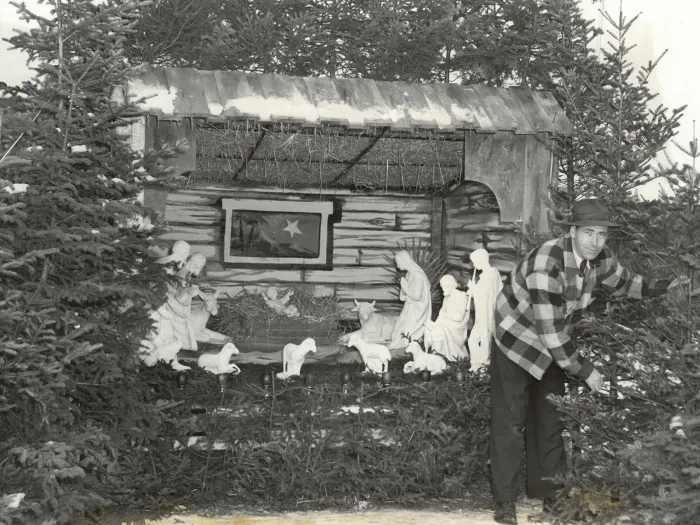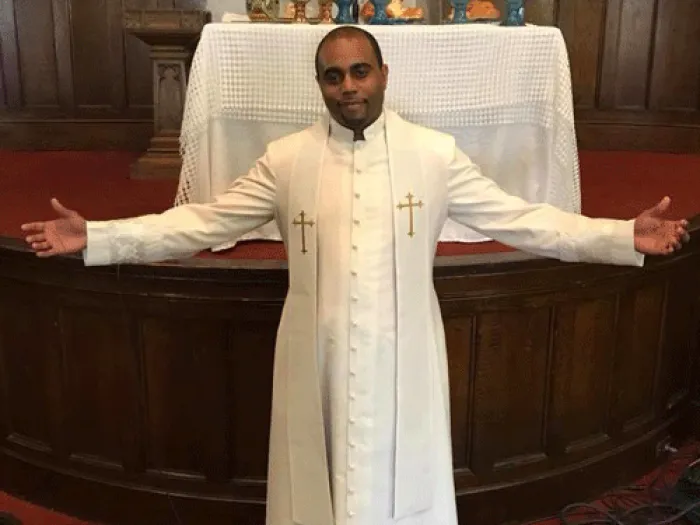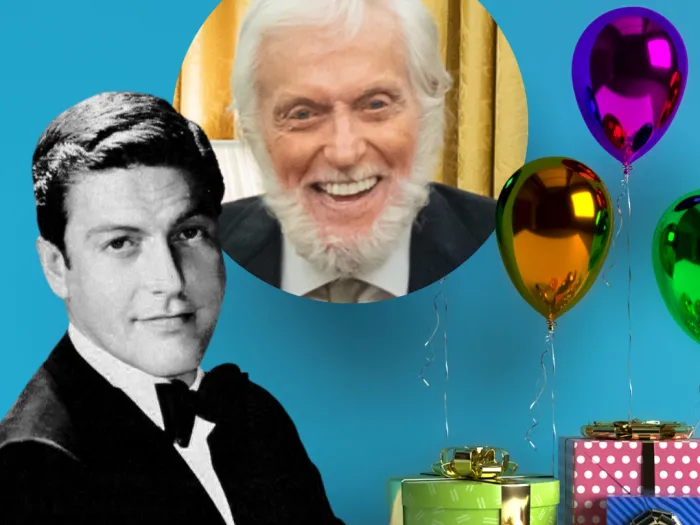Unearthing the past
The murder of Eleanor Chesnut
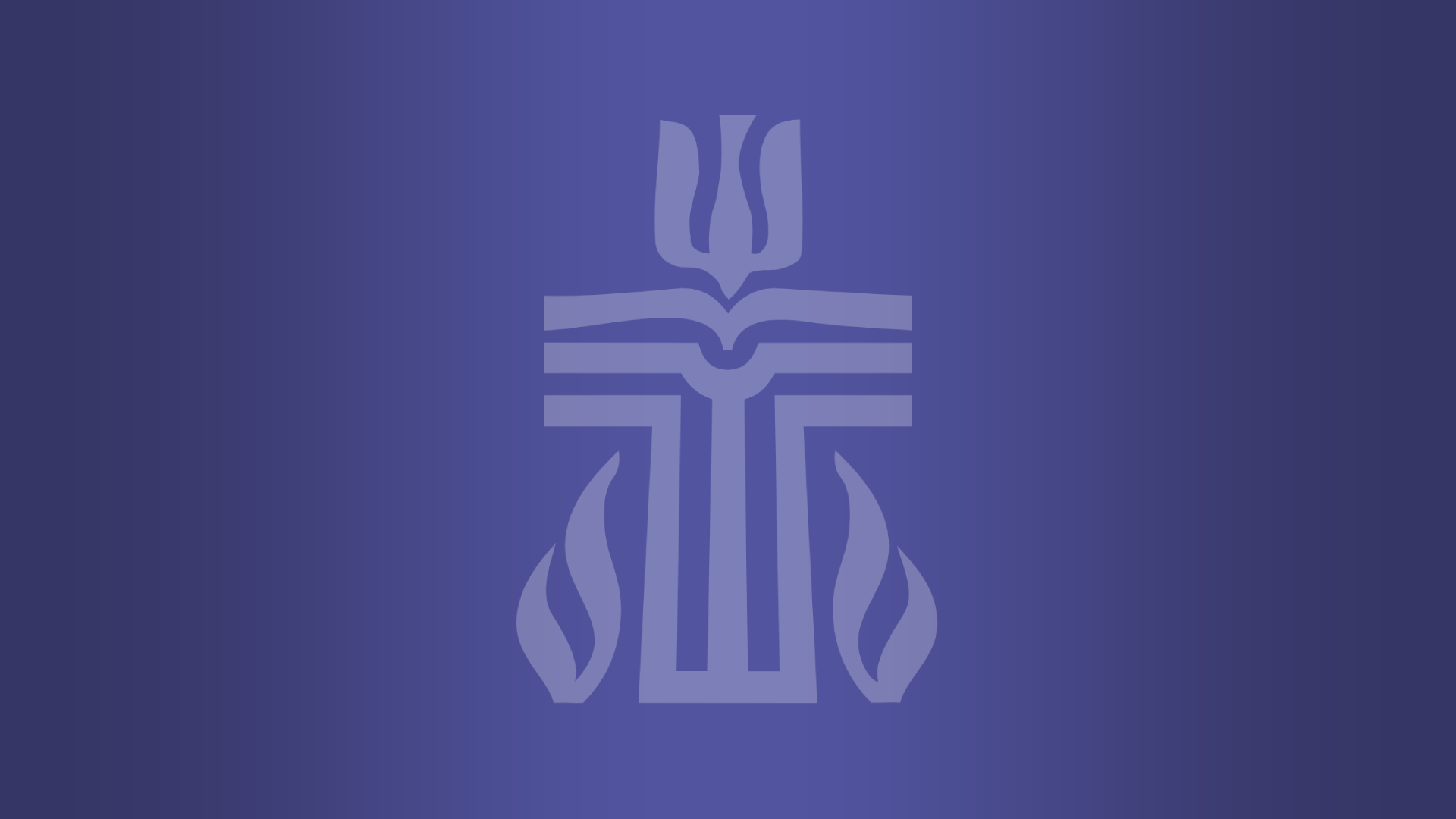
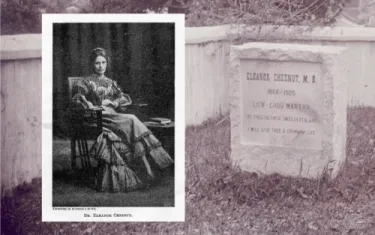
Eleanor and I met by accident.
It was an ordinary day. I was browsing Pearl, the digital collection at Presbyterian Historical Society, for eye-catching content, humming along to whatever song dribbled from my computer’s speakers. Scrolling, scrolling, endlessly scrolling, until — a specter, a ghostly figure in white, prompted me to pause, my finger hovering atop my mouse.
Or — no. Not a ghost. A woman. She is wearing a white, long-sleeved gown that brushes the forest floor. She is leaning against the bark of a slim young tree, her hands behind her back. A long necklace hangs from her neck, reaching below her bellybutton. Her head is slightly cocked.
And she stares at the camera with full force.
I found I couldn’t look away — not from that gaze, so full of intent, a look so heavy it weighed down her eyes. You could see the bags beneath. My mind raced: who was this woman? What had she seen that made her eyes burn so? What was her story? I endeavored to dedicate any spare moment to unearthing her past.
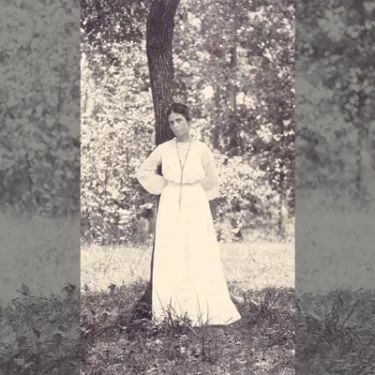
Eleanor Chesnut — sometimes written as Chestnut, as well — was a medical missionary and translator who worked in China from 1894 until her murder in 1905.
But the ghostly girl in the photo above demands more attention than that.
Her beginnings
Eleanor was born in Waterloo, Iowa, on Jan. 8, 1868, and lost her mother at the age of three. She was raised by neighbors for a brief time before being sent to relatives of her mother who resided in Hatton, Missouri.
It was in Missouri that Eleanor’s education began — she enrolled at Park College, a Presbyterian school in the neighborhood, and graduated in 1888. Her enrollment at Park College was brought about by her own hand: “In characteristic fashion she wrote directly to the president of the college, telling him her longings and difficulties, and he wrote to her to come to Parkville.” It was during her career as a student at Park that Eleanor decided to become a member of the church, as well as a missionary.
From the accounts of other students, as well as faculty members, it seems that, upon her arrival at Park, Eleanor was a forlorn, unapproachable, aggrieved child. Perhaps this was caused by the early loss of her parents — her father by choice, her mother through death; perhaps by her acknowledged existence as a “charity case,” a state that she resented and bemoaned; perhaps it was both factors, and a few other invisible ones. Regardless, her fellow schoolmates watched as she came into her own, her sharp edges softening as the years passed, the faith she adopted working to shape and mold her character. Her painful childhood no longer bit at her, causing her so much pain and anger—no, those same memories now caused her to feel sympathetic towards others who suffered in similar, and dissimilar, ways.
After graduating, Eleanor attended Women’s Medical College at Chicago, the Illinois Training School for Nurses, and Moody Bible Institute in her preparation for becoming a medical missionary. Of her decision to join the service, Eleanor is remembered to have said, “I do trust that I am by divine appointment fitted for this work. My age —twenty-one next January. Oh! I just do long to do this work.”
Before she could set out, however, Eleanor had to approach the Board of Foreign Missions for an assignment. Amongst our Foreign Missions Vertical Files, I found a handful of materials related to my woman in white, including six different letters of character validation recommending her to the Board.
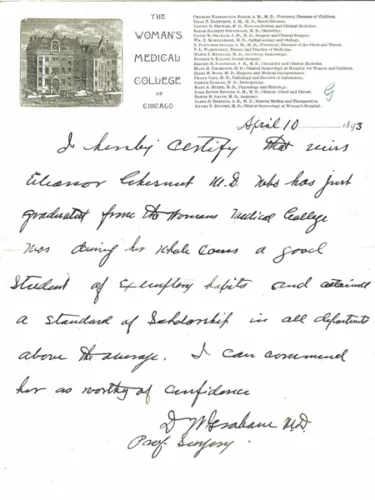
One, dated June 28, 1893, speaks specifically of Chesnut’s Christian character. “As far as my observation goes,” it reads, “she has all the essentials of an earnest Christian worker…” Though I could not make out the name of the person who penned this correspondence, the next was easier. G. N. Hartwell, the then-chairman of Chicago’s Medical Commission, wrote in a February 27, 1893 letter:
“I have seen her in the sick room where she had the care of the delirious patient, and also in the chamber, where sat the grim messenger of Death. And I know her to be efficient, painstaking, watchful, sympathizing, self-controlled, and kind beyond expression.”
In the final character letter, penned by Eleanor’s professor of philosophy and literature at Park College, we learn that “Ms. Nellie Chesnut, A.B. … is a Christian lady and very capable. In looking over her record this morning, I find that she was very apt in the Latin and Greek languages … I think she would be quite ready to learn a foreign language.”
And learn, she did. And go, she went.
From Chicago to Lianzhou
After a brief stint working as a women’s physician in Massachusetts, Eleanor began her travels to China, sailing from San Francisco in the fall of 1894. There, her main headquarters were in Lianzhou (Lien-chou), where she ran a women’s hospital, traveled by horseback to host clinics in rural villages, and trained women to become nurses. Alongside her medical and community work, Eleanor endeavored to translate books from English into the Lianzhou dialect. Two of the pieces she translated fully were the Gospel of Matthew and a nursing textbook.
Before she established herself in Lianzhou, however, Eleanor spent some time at the small mission station near the border of Hunan. At the time of her arrival, the station consisted of one family, one single woman, and one single man. There was a girls’ school as well as three churches. One of the first hurdles to be leapt was the establishment of a “little hospital for women.” After a year spent at this station, Eleanor headed for Lien-chou, where she worked in the men’s hospital until money was provided to build a women’s medical establishment in 1900 — the year of the Boxer Rebellion, an anti-foreign, anti-imperialist, and anti-Christian uprising that occurred in North China.
You see, Eleanor had arrived in China amid a growing national sentiment, one that was developing into a strong anti-foreign “disturbances” policy. Not only that, but the country was experiencing severe drought and famine, and its people were set on finding a reason to blame for the gods treating them in such a fashion. Their spotlight of blame shone brightly on Western influences — especially upon Christian missionaries.
In 1891, just three years prior to her arrival, anti-foreign riots broke out in the Yang-tzu Valley. Eleanor refers to these conditions in one of her letters, explaining to her correspondent that, “I don’t think we are in any danger, and if we are, we might as well die suddenly in God’s work as by some long-drawn-out illness at home.”
The Boxer Uprising was quelled in the fall of 1901; Dr. Chestnut traveled home to the U.S. on furlough shortly after, in the spring of the new year. While on furlough, she declined a proposal for her to take charge of the Hunan’s women’s hospital, believing “that it would be a mistake for me to leave Lien-chou. I am acquainted with the people there, their dialect, diseases, faults, virtues, and other points.”[1]
Tensions peak: the Lien-Chou martyrdom
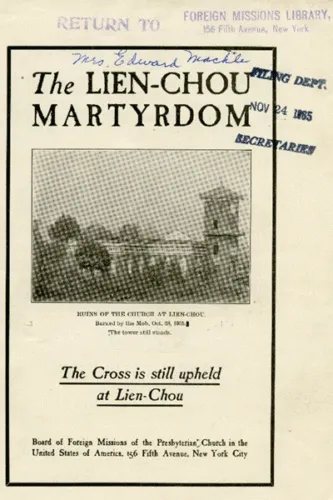
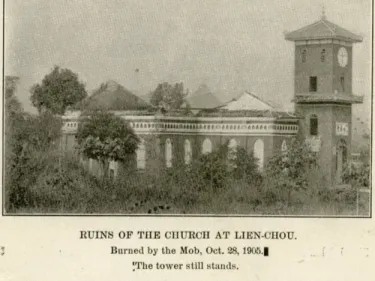
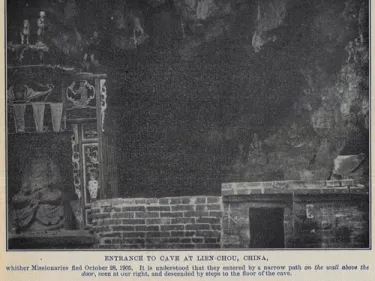
The missionaries had been able to escape the building but were pursued closely by the mob. They sought refuge at a Buddhist temple, nestled within a system of caves, a mile or so away from the station. They were not safe there for long — unfortunately, they were discovered by the enraged mob and subsequently murdered. The date was October 28, 1905.
Dr. Chestnut was the first to be killed.
(The details I will not repeat — however, if you are interested in reading the historical account of the event, you can access it here, at your own risk.)
But a monumental thing happened in the moments before Eleanor was murdered — she tended to one last patient.
Before she was attacked, she had been brought to a tree, where she sat and “noticed a boy in the crowd who had an ugly gash in his head. Dr. Chestnut called him to her, tore off a portion of her dress and bound up the wound. It was her last patient.” And then, after 11 years of medical service in China, Dr. Eleanor Chesnut was murdered. The other victims included three other missionaries, as well as a 10-year-old child.
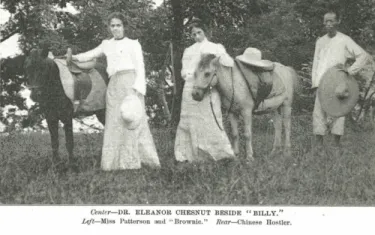
Dr. Chesnut had encountered multiple chances to flee on the day of her death, each of which she’d firmly turned away from.
She had been away from the mission station when she heard talk of trouble — she demanded an escort back to Dr. Machle’s residence, despite the protestations of the boatmen around her. When she’d been reunited with the other missionaries, they ran together to the stables, where they found three horses mounted and ready for escape. Two of the steeds can be seen in the photograph above, which was featured in the August 1906 edition of Woman’s Work, a magazine produced by the Foreign Missions Board, and was accompanied by this story:
“On the thirty-third day after this photograph was taken, the little missionary company, looking from the windows of Dr. Machle’s house, saw the mob coming up the hill and fled through the back door to the stable in the rear… They found Billy and Brownie and Dr. Machle’s horse all saddled and ready to ride. Dr. Machle wrote some months since: ‘I suggested to the ladies that they mount and ride to Sam Kong, but they refused because there were not enough horses for all.’”
Eleanor would remain with her fellow servants until the very end.
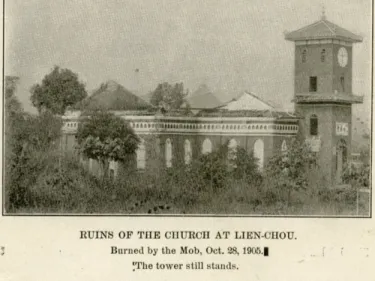
A gruesome thing, and an unfortunate end — though Eleanor’s physical body no longer remained, her memory and legacy stretched out like taffy, influencing and inspiring other missionary workers in their service. The story of the Lien-Chou martyrs spread across the sea, returning the Chesnut’s home country to spread a story of courage, persistence, and dedication.
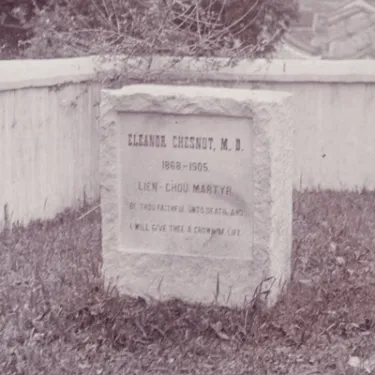
One of the stories that trickled into the ears and hearts of those who heard of Eleanor was one that she had held close to her chest while she lived. She had lived and served in Lianzhou for a year and eight months, during which time she encountered thousands of patients — including one young man whose leg she amputated.
This story is one that spreads outward from Eleanor’s memory, like ripples in a pond. It is one that sticks with its hearer like glue. It is strong evidence of Eleanor’s character, and her dedication to her work in helping others in her community, to the best and breadth of her abilities. And it’s one that she kept to herself for many, many years. When the man’s wounded leg would not heal, Dr. Chesnut was able to gather a volunteer who offered their skin for grafting. It was not enough — but this was no matter, as “the good doctor stepped behind the screen and made up the deficiency from her own body.”
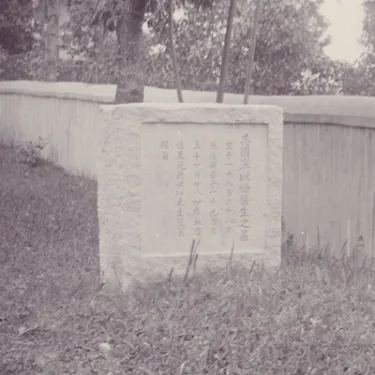
Several people, upon hearing of Chesnut’s life of service, stepped in to take over the work, raising funds for the resumption of mission work in Lianzhou. Finally, in 1907, two years after the missionaries’ murders, “Dr. Elizabeth Carper arrived to administrate the women’s hospital in Dr. Chesnut’s place …The work went on, and we still remember the courage God gave to a little orphan girl from Waterloo, Iowa.”
The work went on, and we remembered. We remember. The little orphan girl from Iowa, who grew to be such a remarkable, courageous young woman. A woman so dedicated to her calling, that “there was just one thing which [she] could not bear. That was, any reflection upon her honor or faithfulness to missionary duty. She would not be charged with flinching.” And flinch, she did not. Her skilled hands did not tremble, even as she knew what lie before her.
It is not lost on me that, in the moments preceding her death, Eleanor had been brought to a tree. I cannot help but wonder. Was the bark coarse against her skin? Did she lean upon it with somberness, like in that first image of her that I stumbled upon? Was she wearing the same necklace, tilting her head in the same fashion? I feel I will remember her always as she first appeared to me, beneath a tree, her feet firmly planted and her dark eyes burrowing into me. I picture her, bending at the waist, tending to a child’s wound. She smiles. She nods. The end is near. And yet, she continues to serve. Until the last, she served.
Further reading / related resources
Servants of the King, Robert E. Speer, published 1909 by the Young People’s Missionary Movement of the United States and Canada, New York, Eaton.
You may freely reuse and distribute this article in its entirety for non-commercial purposes in any medium. Please include author attribution, photography credits, and a link to the original article. This work is licensed under a Creative Commons Attribution-NonCommercial-NoDeratives 4.0 International License.

